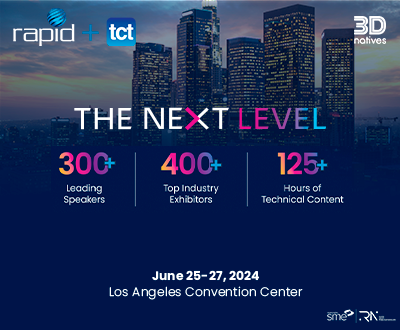Bold Design on the Use of Additive Manufacturing in the Creative Field
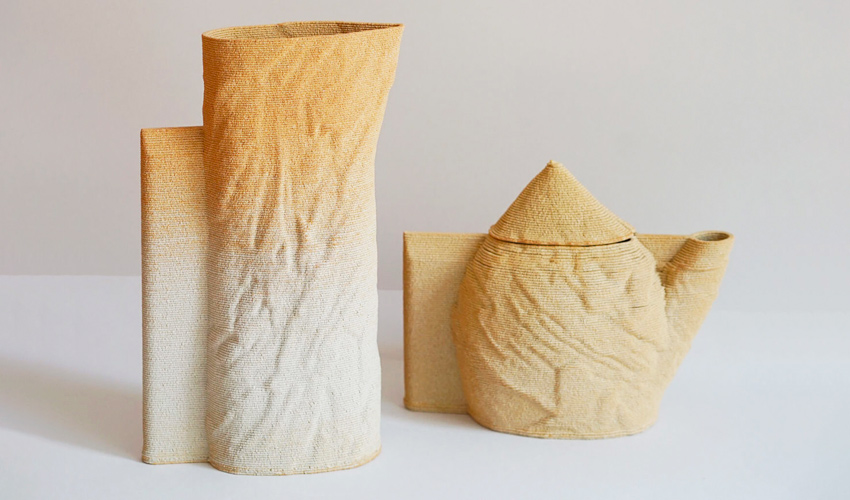
Today, advances in 3D printing have enabled its implementation in a wide variety of applications and sectors. This is largely due to its flexibility, design freedom, manufacturing speed and cost reduction, among other things. In Europe notably, more and more small and medium-sized businesses are adopting this technology as a production method, either by purchasing a machine or through a 3D printing service. One example, in France, is the Bold Design studio, which was set up with the aim of democratizing 3D printing in all creative fields. These range from craftsmanship to interior decoration and other design sectors. To find out more about the company’s work, we spoke to its founders.
3DN: Could you introduce yourself and your connection with 3D printing?
Hello, we are William Boujon and Julien Benayoun, designers and co-founders of Bold Design. We design objects, furniture, spaces and a variety of products for different companies. Our relationship with 3D printing has developed over the years. We are a research laboratory, constantly questioning the possibilities and limits of these technologies. More and more companies are contacting us to create 3D printed parts and collections that bring a more sensitive side to their products. We also organize numerous workshops on 3D printing and design, and give lectures on the subject.
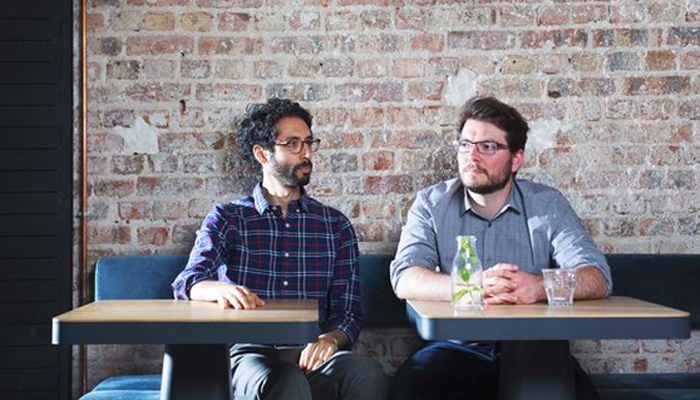
William Boujon and Julien Benayoun of Bold Design (photo credits: Maia Art / Kataba)
3DN: How did the idea to start Bold Design come about?
In 2014, we asked the French company DOOD to print numerous mock-ups for us as part of the design of a small wearable object for a collaboration with the MIT Media Lab. The following year, we designed an FDM 3D printer for DOOD. The idea was to take their printers out of the makers’ world and turn them into a product with an identity that would suit schools, architecture, design agencies and the like. We set up the first prototype in the agency and started asking ourselves whether it was possible to print a certain shape under certain conditions with this tool. We quickly built up what we called our “3D idea book”. One idea and one experiment led to dozens of others. We had never been trained in 3D printing, and most of our knowledge came from hours of hands-on printing.
One of our first questions was whether it was possible to print fibers directly on the machine. We thought about modeling strategies and carried out a number of tests. We published these experiments on social networks, and the AYBAR gallery in Miami took notice and commissioned a collection of three vases called “POILU”, made with PLA loaded with natural fibers such as bamboo, coconut or wood. This project was widely publicized on the web and in various print publications, enabling us to draw the attention of a wider audience to the themes of design and 3D printing. We soon began collaborating with the Habitat Design Lab and other designers.
3DN: What 3D printing technologies and materials do you use at Bold Design?
We work with different workflows, technologies and materials, depending on the customer and the project. For our FDM 3D printing projects, we work on the concept, 2D sketches and 3D modeling with Rhinoceros or Fusion 360, which can be very useful thanks to its “history” function. We design the shapes and configure the files in Cura or SuperSlicer. We then print the first models ourselves. Once this phase is underway, we work hand-in-hand with one of our partners for prototyping and series production. For certain types of project, such as the studio masks commissioned by the Centre Pompidou, we work with the French company Cosmyx 3D. For others, such as Quincaillerie Moderne, with whom we are developing several lighting collections, we work with Batch.works, based in London and Amsterdam. We work with them to develop products until they are aesthetically and technically perfect.
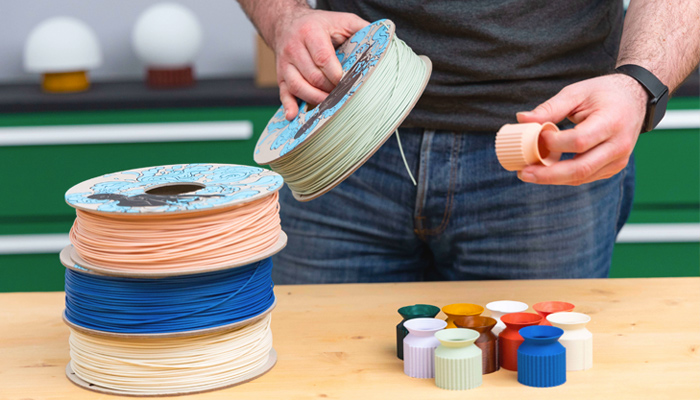
Photo Credits: domestika
We’ve also been approached by companies like Lynxter, to present their experience in the development of 3D printers and the use of very interesting materials such as silicones or ceramics. In this case, we studied their technologies, experimented with their processes in their workshops, then came up with a set of ideas. The files are created in the traditional way in Rhinoceros 3D or in the Grasshoper plugin to determine precise tool paths. The idea behind this collaboration is to illustrate the essence of our respective know-how and to highlight our experiences. In the same vein, we have initiated a collaboration with Pâtisserie Numérique to imagine new concepts for 3D-printed pastries using their unique process. They print a liquid paste contained in a syringe into an edible powder, the secret of which they hold.
We recently designed a metal-printed demonstrator using laser fusion or powder-bonding techniques with the Armines laboratory, the Carnot Institute M.I.N.E.S and the CNRS. Here we exchanged views with the laboratory to understand the advantages and limitations of these technologies, as we do with all the tools we work with. The aim was not to imagine a functional, mass-produced product, but an exceptional work of art with a strong visual impact and numerous details to illustrate the material’s multiple possibilities. We imagined a scenario and drew the various elements as a whole. We then sent our 3D files to the laboratory, which adapted and optimized the objects so that they could be printed. Not only that, but we put a lot of work into the laboratory, designing shapes with sometimes complex and subtle details.
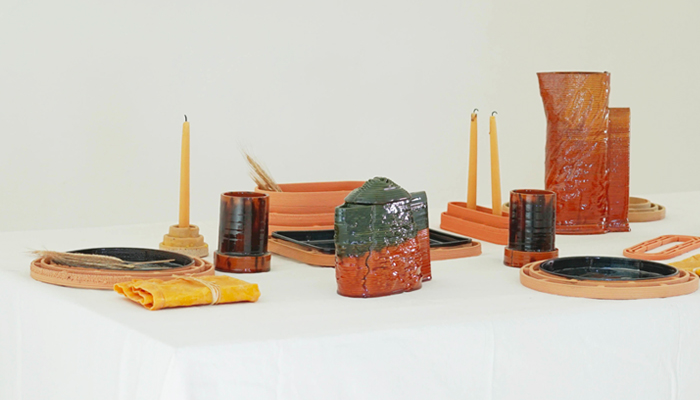
Exhibition of 3D-printed objects by Emmanuelle Roule, Bold Design and 8 Fablab (photo credits: Emmanuelle Roule).
3DN: What are the advantages of 3D printing over traditional methods?
We always try to use the right method for each project. There are many advantages to using 3D printing. By using the same parametric and 3D design tools, we can develop projects of different scales, typologies and materials. We take full advantage of the possibilities offered by these technologies in terms of customization and creativity, with a new aesthetic emerging from the objects. It’s relatively easy to fashion new materials from recycled or reused production scraps.
When we create products for mass production, 3D printing enables us to manufacture objects as close as possible to the end user. We can limit stockpiling by producing small series, on demand, without necessarily increasing costs, unlike injection molding processes, which require costly and complex tooling. Our mastery of design for 3D printing enables us to manage both the aesthetic aspect and highly technical elements within the same part, limiting human intervention, which in turn enables us to obtain precise, high-quality objects at very reasonable prices.
3DN: Any last words for our readers?
We firmly believe in the potential of additive manufacturing technologies. In fact, they’re already everywhere, from advanced nanoscale medical solutions to large-scale construction, concrete and many solutions in between.
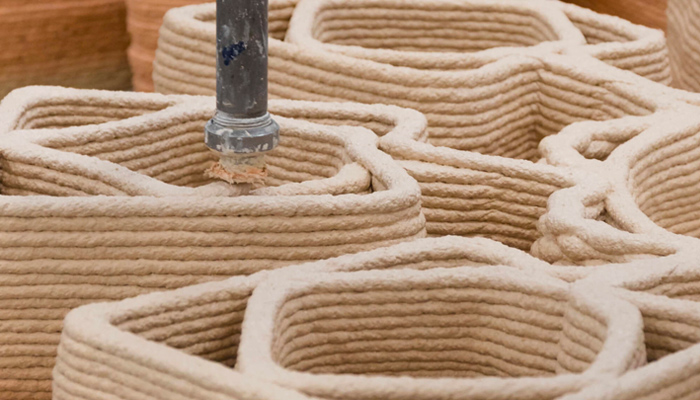
Bold Design is also exploring the possibilities of 3D printing using Leatherstone ©, a material made from leather scraps left over from production (photo credits: Marc Dimitrov).
In the manufacture of objects, furniture and buildings, some of these technologies make it quick and easy to reuse what can still be considered waste. We are at a point in history where we have largely exploited the planet’s limited resources. Some materials are on the verge of exhaustion. On the other hand, we are overwhelmed by the waste inherent in the production of consumer goods, for example. It’s time to use these “new” materials, derived from old and unfortunately “abundant” materials, in large-scale projects to build the future. More information on the Bold Design website HERE.
What do you think of Bold Design’s work? Let us know in a comment below or on our LinkedIn, Facebook, and Twitter pages! Don’t forget to sign up for our free weekly Newsletter here, the latest 3D printing news straight to your inbox! You can also find all our videos on our YouTube channel.
*Cover Photo Credits: Emmanuelle Roule






